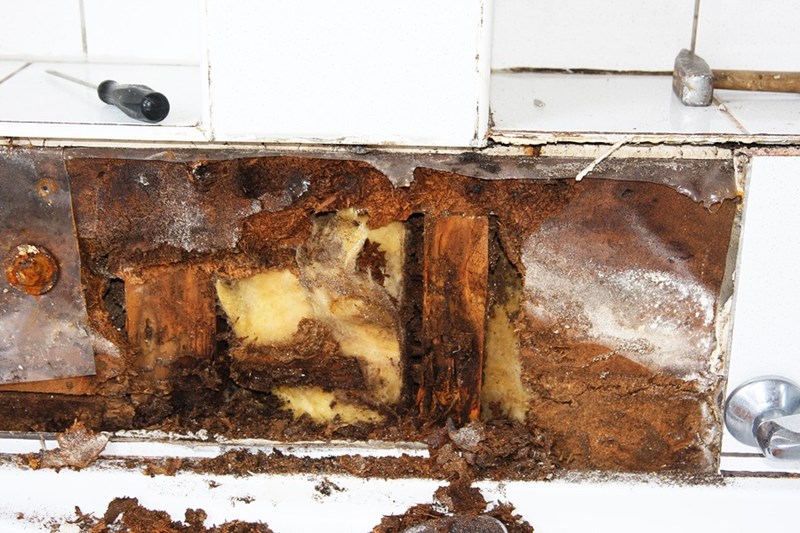How to Help Prevent Water Damage in Your Bathroom
How to Help Prevent Water Damage in Your Bathroom
Blog Article
Presented here in the next paragraph you can discover some reliable expertise pertaining to How to Repair and Prevent Bathroom Water Damage.

The bathroom is exceptionally at risk for wet accumulation and potential water damage because of the regular use of water in it. This short article provides simple evaluation techniques to help detecting water damage hazards.
The constant use water in the washroom makes it exceptionally at risk for moist accumulation as well as prospective water damage. By inspecting it routinely, you can reduce water relevant damages.
The following set of inspections is simple to perform and also must be done once in every 3 months in order to maintain your restroom in good shape as well as to prevent possible water problems caused by the bath tub, the shower, pipeline joints and plumbing, sinks, closets, as well as the toilet
Do not forget carrying out these inspections as well as be comprehensive while performing them. Bear in mind that these simple assessments can save you a great deal of money by providing very early indications for water damages
Bathtub and also Shower
The shower as well as bath tub need special attention and also maintenance. Check the floor tiles as well as replace if fractured. Ensure that there is no missing cement between the floor tiles. Check and change broken caulking at joints where the wall surfaces satisfy the floor or the bath tub. Blocked drains pipes as well as pipes issues will protect against the tub from drying out as well as might suggest serious issues beneath the bath tub. Speak with a specialist right away to prevent structural damages. Focus on stainings or soft locations around the tub walls as they might indicate an inner leak.
Plumbing
Signs for water damages are difficult to detect considering that most pipelines are installed inside the wall surfaces.
Pay special focus to flooring and also walls dampness as well as discolorations as they may show an undetectable plumbing problem. Inspect moisture degrees in adjoining spaces as well.
Sinks as well as Cabinets
Sinks and cupboards are exposed to wetness and also humidity day-to-day and are usually neglected. Evaluate regularly under the sink as well as on the kitchen counter over it. Repair any type of drip in the trap as it may recommend drainpipe troubles. Look around the sink, slow draining pipelines might show a blocked drain. Change sink seals if they are fractured or loose.
The Bathroom
The bathroom is an at risk water joint. Check the water lines and search for leakages around the commode seat, in the tube, and under the water storage tank. If you find any kind of signs of moisture on the floor around the bathroom, look for leakages in the toilet edge and also tank seals.
Understand that hanging bathroom bowl deodorants enhances the possibilities for obstructions.
TIPS TO PREVENT WATER DAMAGE IN THE BATHROOM
The average household uses approximately 80-100 gallons of water per person per day. For a family of 4, that's almost 2,500 gallons of water a week! The largest portion of this consumption comes from bathroom use. Flushing the toilet uses the most water, followed by taking a shower or bath. With that much water running through the home, water damage in the bathroom is bound to happen. Knowing how to spot signs of a water leak is essential to preventing long-term damage. This guide provides you with tips to reduce the impact of water damage on your bathroom.
CAUSES OF BATHROOM WATER DAMAGE
Pipe breaks are the most common cause of water damage we see in our daily jobs. The age of a pipe plays a large role in a pipe break as well as corrosion. Over time, the metal begins to break down, allowing water to escape. Frozen pipe breaks are also a concern in the winter months. Toilet overflows caused by paper products or children flushing inappropriate items. Degraded caulking around the toilet or bathtub can allow water seepage, sometimes behind the fixture, into the subfloor or walls. Condensation forms when the water in a pipe is cooler than the air temperature. Beads of water form on the exterior of the pipes, sometimes so much so that the water begins to drip and pool below. Sink or shower backups created by poor drainage. HOW TO PREVENT WATER DAMAGE IN YOUR BATHROOM
Inspect your toilet supply line for worn or frayed hoses and replace them as needed. Winterize your plumbing to prevent a frozen pipe break. Use vent fans to prevent condensation that can lead to mold growth. Routinely check and replace degraded caulking around your toilet or bathtub. Increase the temperature in your toilet tank and insulate your pipes during the warm summer months to keep condensation from forming. Use child safety locks on the toilets. Flush only toilet paper. "Flushable" wet wipes are actually not good for your plumbing system. Additionally, feminine hygiene products should not be flushed. Prevent water from escaping the tub or shower. Make sure shower curtains are in good condition. Inspect shower doors and replace the seal strip if necessary. Wipe up any water that accumulates on the floor and use bath mats. Water left to sit can cause damage to the tiles and flooring. Refrain from using bath products containing heavy oils to avoid a clogged drain.

As an avid person who reads on Looking for Signs of Water Damage in the Bathroom, I was thinking sharing that piece of content was really useful. Sharing is caring. You won't know, you may be doing someone a favor. We treasure reading our article about Looking for Signs of Water Damage in the Bathroom.
Book Your Appointment Report this page